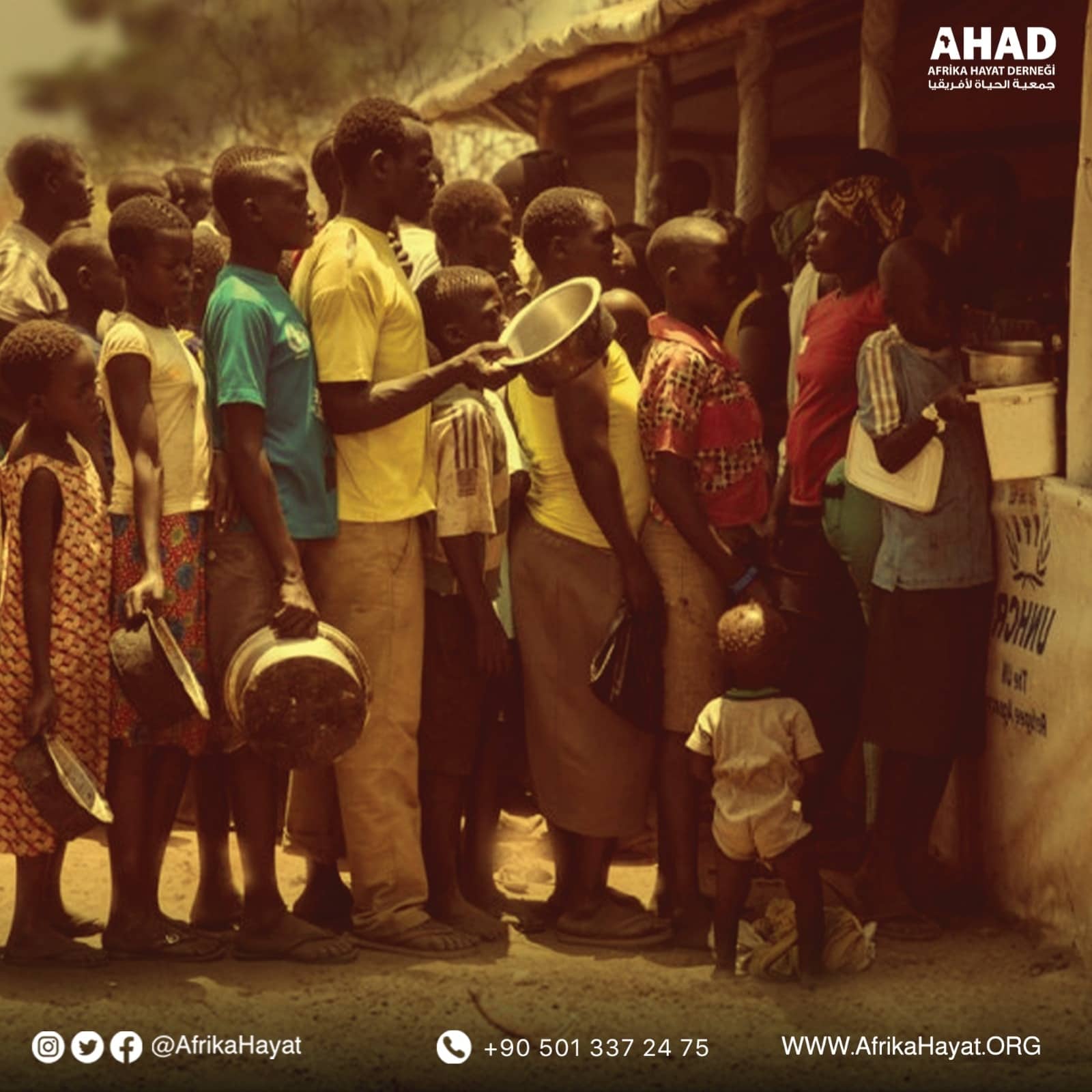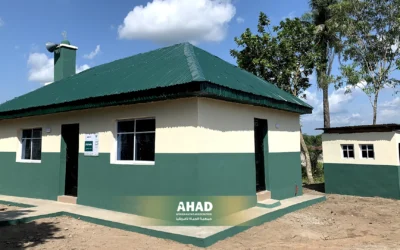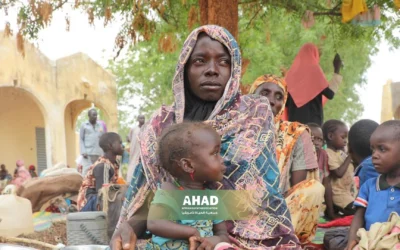Drought in Kenya
Drought is a major challenge facing Kenya, significantly affecting the daily life of the population and the national economy. Droughts in Kenya can be divided into waves that come every several years, causing an acute shortage of Water Resources and deterioration of agricultural conditions. The effects of drought are most severe in arid and remote areas, where people rely mainly on agriculture and livestock grazing to live.
Causes of drought in Kenya:
Climate change and environmental sustainability:
Kenya is experiencing significant fluctuations in rainfall and rising temperatures due to global climate change. This variability leads to an increase in the frequency of occurrence of droughts, since the rain regime is negatively affected.
The unsustainable use of land and resources in Kenya is a major factor in the deterioration of environmental conditions. For example, unsustainable afforestation and the traditional use of water resources contribute to the shrinking amounts of water available for agricultural and civil use.
Lack of rainfall:
Rains are the primary source of water in Kenya, playing a crucial role in supporting agriculture and securing the necessary water supply for humans and animals. The lack of rainfall means that the available amounts of water are reduced, which increases the stress on Water Resources and negatively affects agricultural production and daily life.
Lack of planning and infrastructure:
The lack of strategic planning for Water Resources Management makes it difficult for Kenya to cope with drought-related challenges. Good planning requires well-controlled strategies to deal with rainfall fluctuations, ensure clean water supply and sustainable agriculture.
Outdated and substandard water infrastructure hinders the country’s ability to cope with water crises. Dams and water distribution systems are often in need of modernization and improvements to ensure a reliable supply of water, especially in dry periods.
The drought in Kenya is a very serious challenge that requires an immediate and comprehensive response. In order to mitigate the effects of drought, Kenya must improve water resource management, promote sustainable agriculture, improve water infrastructure, and strengthen strategic crisis planning. By doing so, Kenya can regain its ability to deal with future drought-related challenges and achieve sustainable development for a better future.

Effects of drought in Kenya
Lack of food:
Drought causes a significant shortage of agricultural production, which leads to a reduction in the available quantities of food. Agriculture is the primary sector in Kenya and relies heavily on the rainy seasons to grow crops and raise livestock. The impact of drought reduces agricultural productivity and leads to a decline in the amount of food available on the markets. As a result, food prices increase significantly, which makes them inaccessible to many families, especially the poor.
Low groundwater levels:
Groundwater is an important source of water supply in Kenya, especially in dry and remote areas. Drought leads to an acute shortage of groundwater levels due to lack of rainfall and excessive use of water. This decline in groundwater affects the water supply of cities and rural communities, further straining water resources and making everyday life more difficult for local residents.
Increasing poverty:
Drought is significantly increasing poverty rates in Kenya. The deterioration of economic conditions and the shortage of work due to drought leads to a loss of income and a decline in the economic productivity of households. In addition, drought increases the costs of life due to high food and water prices. This impact is most severe on poor families who depend on small-scale agriculture and local resources for subsistence.
The drought in Kenya is a major challenge that requires an immediate and comprehensive response. In order to mitigate the effects of drought, the government, international organizations and civil society must take measures to strengthen food security, improve water resource management and provide sustainable employment opportunities. Thus, Kenya can reduce the damage caused by drought and strengthen its ability to adapt to future challenges associated with climate change.
Solutions to drought in Kenya
Promoting sustainable development:
– Kenya should improve water resources management through effective practices such as controlling the sustainable use of groundwater and implementing effective irrigation systems.
– Management can be improved by promoting awareness of the importance of rational water use and encouraging farmers to use advanced irrigation techniques and improved agricultural techniques.
Promoting sustainable agriculture:
– The use of sustainable agricultural practices such as organic farming and biodiversity conservation should be promoted.
– This can be achieved by providing support and training to farmers to implement agricultural practices that conserve natural resources and improve water use efficiency.
Development of water infrastructure:
– Dams can be built to effectively store and distribute water during dry periods.
– Irrigation systems should be improved and expanded to provide water to crops on a regular and effective basis.
– Flood control systems should be developed to channel the water generated by heavy rains to dry and needy areas.
Adapted cultivation techniques:
– The efficiency of water use can be enhanced through the use of modern irrigation technologies such as drip irrigation and point irrigation.
– These technologies reduce water loss and improve its effective distribution to crops.
– The resistance of crops to drought can be enhanced through the development and use of improved agricultural systems that effectively respond to drought conditions.
– These systems include the use of drought-resistant varieties and advanced agricultural techniques such as vegetative nesting and irrigated crops.

Strengthening crisis planning and emergency response:
– Rapid and effective drought response plans should be developed to deal with the expected water crises.
– These plans should include strategies to provide immediate assistance to the drought-affected population, such as water and food distribution, psychological support and transportation.
– Strategic planning for water crisis management should be strengthened and the necessary policies should be identified to enhance the country’s resilience to water challenges.
– All interested parties should participate in this process, including the local government, NGOs and civil society.
Kenya needs multidimensional strategies to address drought-related challenges, including improving water resources management, developing water infrastructure, adopting adapted farming techniques, and strengthening crisis planning and emergency response. By implementing these solutions, Kenya can reduce the negative effects of drought and enhance its ability to adapt to increasing future challenges.
The humanitarian and development contribution to the heart of Africa is AHAD’s mission
AHAD stands at the heart of the African continent, especially in the countries of Central and West Africa, aspiring to improve the quality of life of the poor and disadvantaged through its targeted projects in the fields of health, education, water and economic development.
AHAD understands the unique nature of the communities it works with, and chooses strategies based on exploiting their skills and abilities, enhancing their participation and influence in building their communities towards sustainable development.
AHAD adopts the motto” because she deserves life”, and works hard to achieve this motto in every project she implements. AHAD seeks to make a positive impact in the lives of the communities it serves, by providing basic needs, improving the quality of education, and empowering individuals to participate effectively in building productive and sustainable communities.
You can visit the AHAD website to find out more about the projects it offers
ALSO READ
WHAT THE FOOD BASKET CONTAINS IN AHAD
Join us in our message




